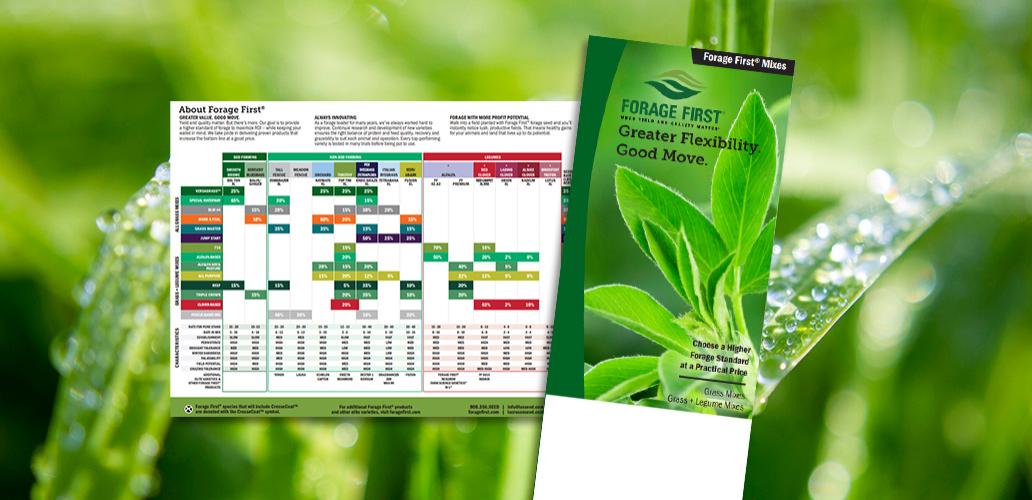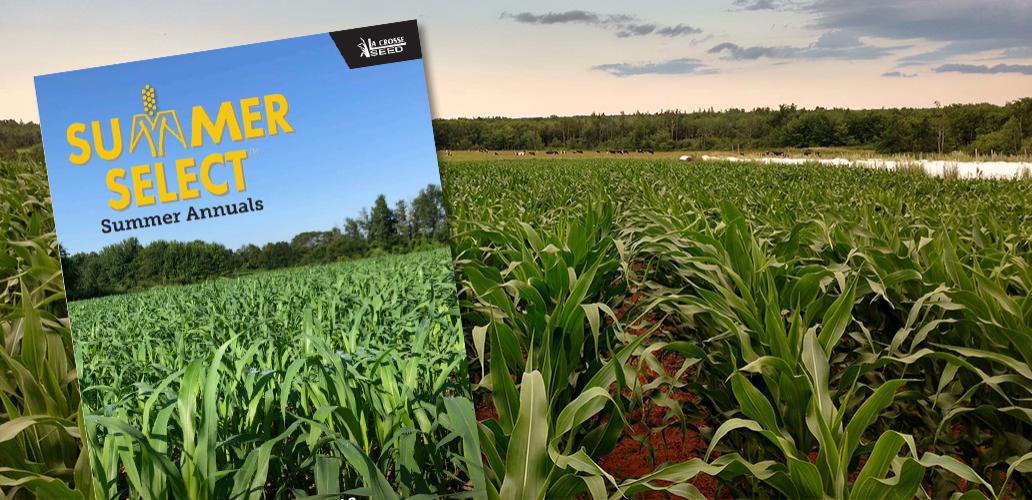Forage First Guide I Summer Select Guide
Greater Value. Good Move. Yield and quality matter. But there’s more. Our goal is to provide a higher standard for forage to maximize ROI– while keeping your wallet in mind. We take pride in delivering proven products that increase the bottom line at a good price.
.jpg&Width=940&Crop=5&quality=100)
Summer Select 95 BMR BD forage sorghum is the ideal choice for the dairy or feedlot producer looking for a product that can deliver superior silage qualities using a one cut system.
In a short period of time, this BMR 6 hybrid will consistently produce top yields of high quality forage with tremendous grain production; all while, when planted at lower populations, the dwarfing gene assists with standability, making this hybrid a favorite. The high sugar levels in the stems combined with the lower lignin concentrations of the BMR 6 gene lead to enhanced digestibility and animal intake.
CHARACTERISTICS:
1 = Poor; 5 = Excellent
Recovery After Cutting: 3
Double Crop: 2
Sugarcane Aphid Tolerance: 1
Standability: 5
Leaf Disease Resistance: 4
Traits: BMR 6 (Brown Mid-Rib); Brachytic Dwarf (BD)
Uses:
- Best suited for one-cut silage systems: 105 – 115 days to soft dough
- Can be cut for hay, as long as proper management is followed; not suited for grazing environments
SEEDING:
Planting Time:
May-July
Emergence (days): 10
Seeding Information:
Seeds/lb.: 15-20,000
Soil Temperature: 60 F
Depth (in.): 3/4-1
Days to Harvest (Soft Dough Stage): 105-115
Harvest Height (ft.): 6-8
Dryland Seeding (lbs./acre): 4-8
Irrigation/Hi-Rain Seeding (lbs./acre): 7-12
- Can be no-tilled into stubble of winter and spring crops
- Do not plant in soil with pH greater than 7.5 as iron chlorosis can be a problem
MANAGEMENT:
Fertility:
- Under favorable conditions, 1-1.25 lbs. of nitrogen/day of planned growth should be available for ultimate growth, with little risk for nitrate poisoning. For example, for a planned 95 day harvest, 95-118 lbs. of N should be available.
- Exceeding the recommended fertility above may have negative lodging results
- Potassium levels should be maintained similar to that of corn
- If soil pH is greater than 7.2, an application of iron may be necessary to prevent iron chlorosis
Harvest & Management Tips:
- Usually harvested about 110 days after planting
- Harvest prior to heading for higher protein levels; energy levels will increase upon heading
- Dry hay and/or baleage are applicable where and when proper harvest management is followed. Dry hay is suited for areas with less moisture and humidity; baleage offers more flexibility in all other areas.
- Harvest at proper moisture (yield and quality are maximized between 60-72%)
- Wide windows are required for baleage products to ensure rapid dry down
- For silage, keep chop length uniform (around 1/2 in.)
Avoiding Nitrate & Prussic Acid Poisoning:
- Do not harvest drought stricken plants within four days following a heavy rain
- Do not apply N prior to expected drought periods
- If in doubt, cut at higher stubble height as nitrates tend to accumulate in the lower stalk
- If high prussic acid is found, wait one month prior to feeding. Unlike excessive nitrates, prussic acid will escape from the plant over time.
- When questions about livestock safety remain, get forage tested promptly
Ratings
Scale 1-9, where 9 = best or most pronounced
SC Aphid Tolerance
Disease Resistance
Cutting Recovery
Double Crop
Standability
- Widely adapted, BMR 6 hybrid
- Dwarf hybrid = improved standability, higher leaf: stem ratio for increased digestibility
- Multi-race resistance to anthracnose

.png)
.png)


.png)










